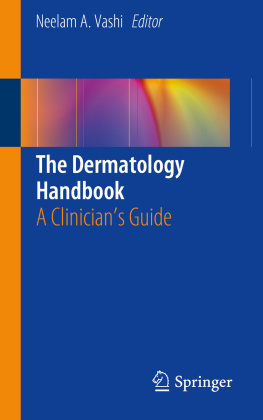1.1.1 How to Study
Everyone has his or her own strategy for learning dermatology. Dermatology residents are often assigned to read textbooks, study unknown dermatopathology slides, and participate in teaching rounds, conferences, and grand rounds! These present a large amount of information, but of course, much of this knowledge is quickly forgotten.
If I have one piece of advice for studying dermatology, it is this: do not reinvent the wheel. Stick with whatever has worked for you in the past.
More and more, we are focusing our energy on the boards. Both the in-training examination and the American Board of Dermatology Certifying Examination test obscure facts and details that are important to know. You may be surrounded by residents whose impressive knowledge base about dermatologic disease is quite intimidating. Do not be afraid! It is great to learn trivia and excel at roundsmanship, but anybody can memorize facts if given the time. The important thing is to learn how to think like a master clinician and approach each patient in a logical, systematic manner. While certain facts must be memorized, try to organize and understand the concepts that support this knowledge. The best physicians know the facts (e.g., what the treatment for a disease is), but also have a broad understanding of the reasoning behind this choice (e.g., the targeted pathophysiology and the mechanism of action of the treatment). Conceptual learning provides the bedrock for memorizing and retaining facts.
1.1.2 Logic of This Book
When confronted with the need to classify species in 1857, Charles Darwin wrote, It is good to have hair-splitters and lumpers. Those who make many species are the splitters, and those who make few are the lumpers. This line of thinking, the lumper-splitter dichotomy, is quite applicable to the categorization of dermatologic diseases.
A lumper believes there are many names for the same disease, perhaps because observers of that same disease are able to distinguish subtly different forms. It is simpler to learn a classification with fewer categories.
A splitter sees all the subtle differences and variations in disease processes and hopes to define optimal treatments by applying the scientific method to each separately categorized condition.
This book assigns merit to both the lumper and splitter worlds. There is value in lumping diseases into categories for the sake of easy learning and understanding, though admittedly sometimes this forces diseases into groups in which they may not cleanly fit.
On the other hand, splitting diseases by enumerating different names and distinctions permits more in depth learning about diseases in a broader category while defining distinctive features.
When I was a resident, I found that textbook readings, lectures, and other didactics blended together unpredictably, and often specific topics were taught in very different ways by each professor. There was also a large amount of important information that was not clearly presented in textbooks or manuals. In order to gain focus, I began to compile outlines and lists of everything I learned in an effort to unify various perspectives and points of view, and also to collect factoids and mnemonics so that I could study important material the same way every time. My notes reflect an organic mix of teachings during residency and as an attending dermatologist including information from lectures, textbooks, clinical articles, and personal experience. My goal is combine and organize this information in a systematic and logical way so that it is easier to learn. To simplify the presentation, I have not listed references. In the main outlines, I have focused on the important high yield and key conceptual points, yet still the information is comprehensive.













